Dutch artist inspires jeweller’s latest collection
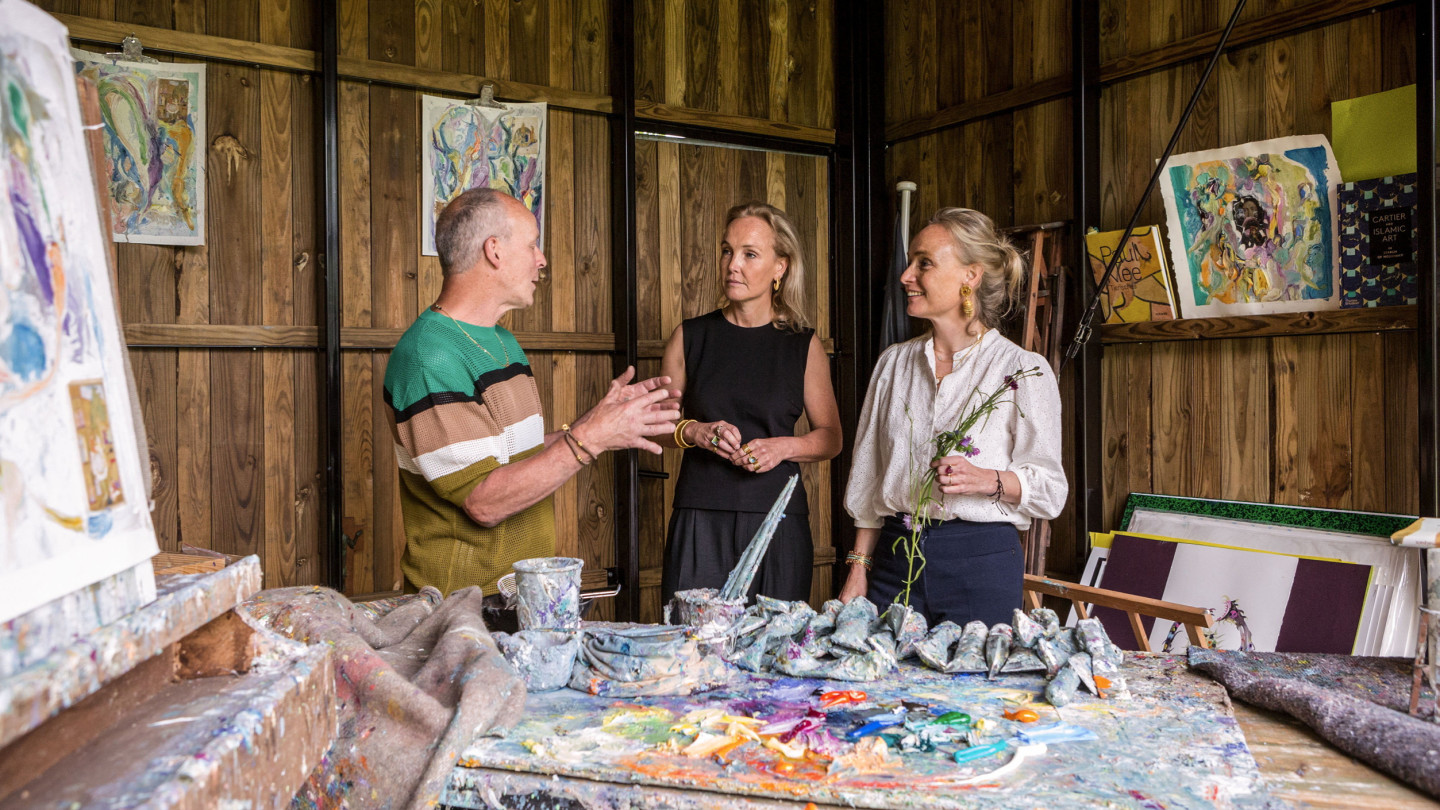
Roula Khalaf, Editor of the FT, selects her favourite stories in this weekly newsletter.
It was during her long recovery from a near-fatal accident that jewellery designer Fleur Damman-van Gelder encountered the work of Dutch artist Marc Mulders. Following intense hospital rehabilitation sessions, she would visit a mixed-media exhibition of his work at Noordbrabants museum in ’s-Hertogenbosch to catch her breath before returning home to her young children. She found peace and quiet in the beautiful colours.
“It can still move me if I think about it,” says Fleur, who suffered a traumatic brain injury in 2007 while handling a horse. “It created a place for me to find myself again.”
Her husband arranged for Fleur — creative director of Van Gelder Jewellery, the Dutch business she owns with her sister, Noelle Viguurs-van Gelder — to meet Mulders. They became friends, connecting over a shared interest in Indian culture (Van Gelder specialises in Indian heritage jewellery).
Mulders’ paintings inspired Fleur’s designs for the company’s Baoli contemporary collection; his colour palette is echoed in the seven earring and four ring designs, with new pieces being added in February. Van Gelder plans to display the jewellery alongside Mulders’ work at the Frieze London art fair in autumn 2023.
This will come ahead of the jeweller’s anticipated participation in the DIVA museum exhibition in Antwerp, Belgium: India, from Diamond to DIVA. Scheduled for spring 2024, it will explore the long relationship between India and Antwerp through the diamond trade.
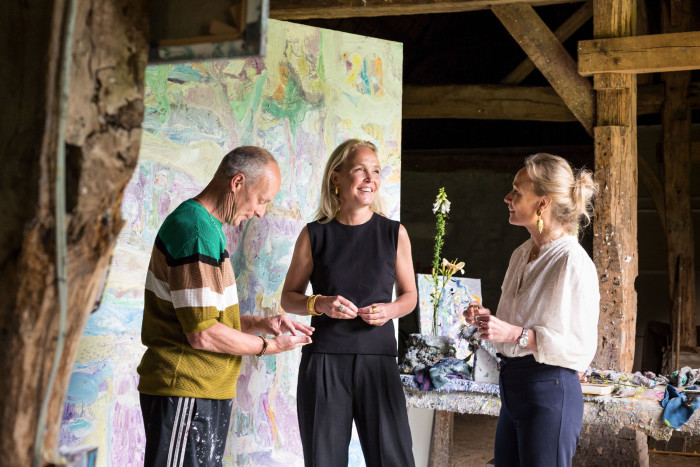
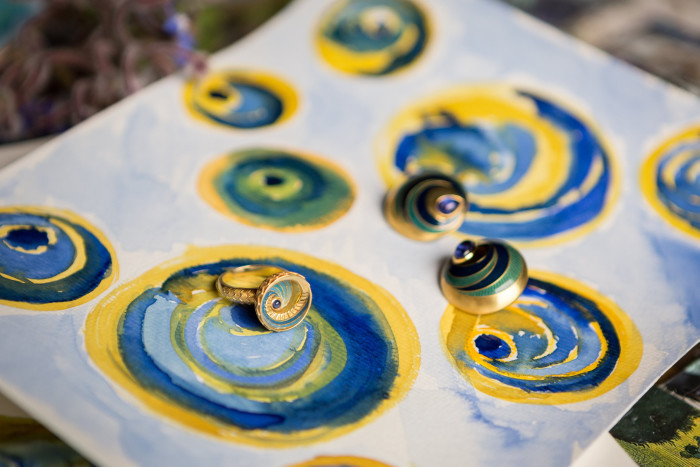
The sisters hope that showing their jewels, new and old, at such high-profile events will increase the brand’s reach which, in turn, could accelerate growth in their already expanding business.
Fleur and Noelle’s mother, Bernadette, founded Van Gelder Jewellery in 1980 to showcase traditional heritage jewellery collected during her travels in India. The sisters joined the business in 2000 and took the reins in 2012 when their mother stepped back from the company. They launched their first contemporary collection in 2019.
Fleur started working on Baoli during the first Covid lockdown in 2020 — a period that “felt in a way very familiar” because of the uncertainty she had experienced during her recovery. She used the time to reminisce, both on Mulders’ paintings and her own travels in India, and found inspiration in the country’s stepwells: ancient and elaborate architectural structures that descend into water, known as baolis.
Aware of abstract artist Mark Rothko’s colour field paintings that aimed to elicit an emotional response, and her own experience of how colour can affect mood, she found the “right” hues for the gold jewellery — those that made her “feel” — in Mulders’ pastel palette. She worked with Van Gelder’s studio in Jaipur on hundreds of samples, before arriving at the desired shades of enamel, which are paired with tanzanite, sapphire, peridot and tourmaline.
Mulders is surrounded by the source of his own inspiration: we meet at his rural studio on the Landgoed Baest estate, north-west of Eindhoven, where the doors open on to his treasured flower garden and wild-flower field. Books on Persian and Indian miniatures lie on a workbench, and he has also been translating on to canvas his work creating stained glass. “When I am in the studio to make an oil painting, I have the memory and inspiration of the day before when I was painting against the light,” says Mulders.
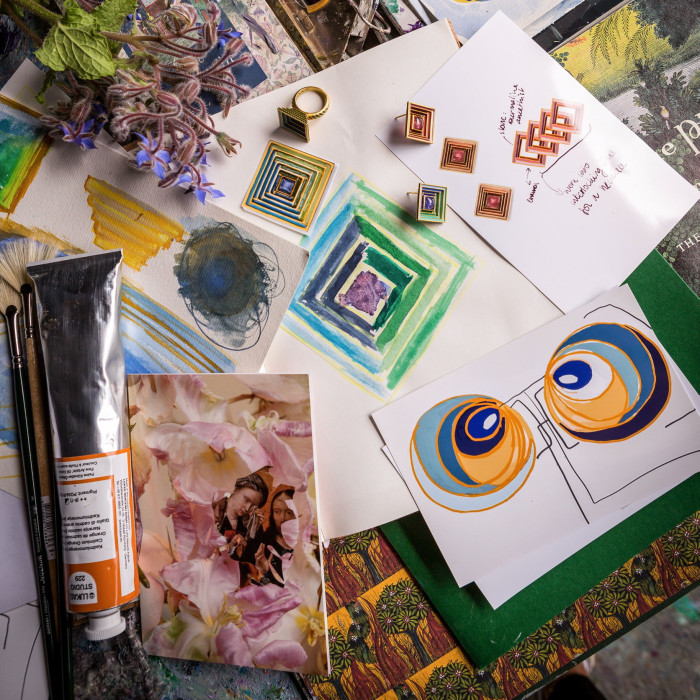
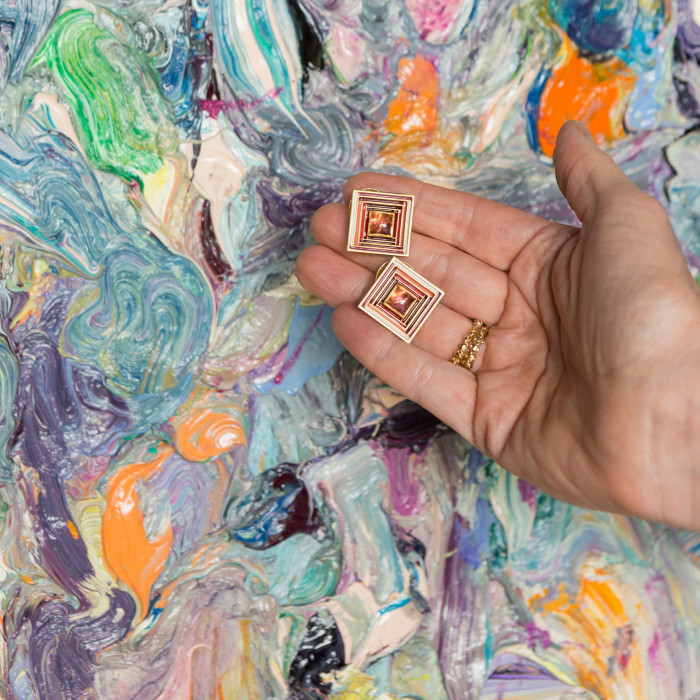
He creates a sense of transparency and light in his tactile oil paintings by tinting turpentine with paint. Fleur aims to capture the same effect by alternating hues of translucent and semi-translucent enamel on top of an engraved or filigree gold base; or by adding between enamel some fine gold edging, which is highly polished on one side and matte on the other, to create a reflection similar to sunlight on rippling water.
Sales of Van Gelder’s contemporary collections make up half the jeweller’s revenue, according to Noelle, who is the commercial director. The company has typically achieved a growth rate of 10 per cent year on year. After investing heavily in the year that they launched the contemporary designs, this fell to just under 5 per cent. But the business has since bounced back, recording overall growth of almost 30 per cent in 2021. “We are confident that 2022 will be in that same growth range,” Noelle says.
In 2020, the company opened a by-appointment-only gallery in ’s-Hertogenbosch, south-east of Rotterdam, where clients can view Indian heritage pieces alongside the contemporary jewellery they help inspire. The contemporary designs are also available through fine jewellery marketplace Auverture and two US galleries.
There are plans to increase sales points: Noelle is meeting with boutique owners later this month during Paris Fashion Week and is “seriously looking” at London. There is a desire to expand beyond Europe and the US too; the company is in the early stages of exploring the possibility of a presentation in Hyderabad, India.
However, talk of strategy is not the sisters’ style. Their mother set up Van Gelder despite being told repeatedly there was “no market” for traditional Indian jewellery, says Noelle.
“But she dared, and she really followed her passion, and that is still an inspiration for us. We do what we love. That is such a simple sentence, but for us it contains so much because of Fleur’s accident.”
Comments